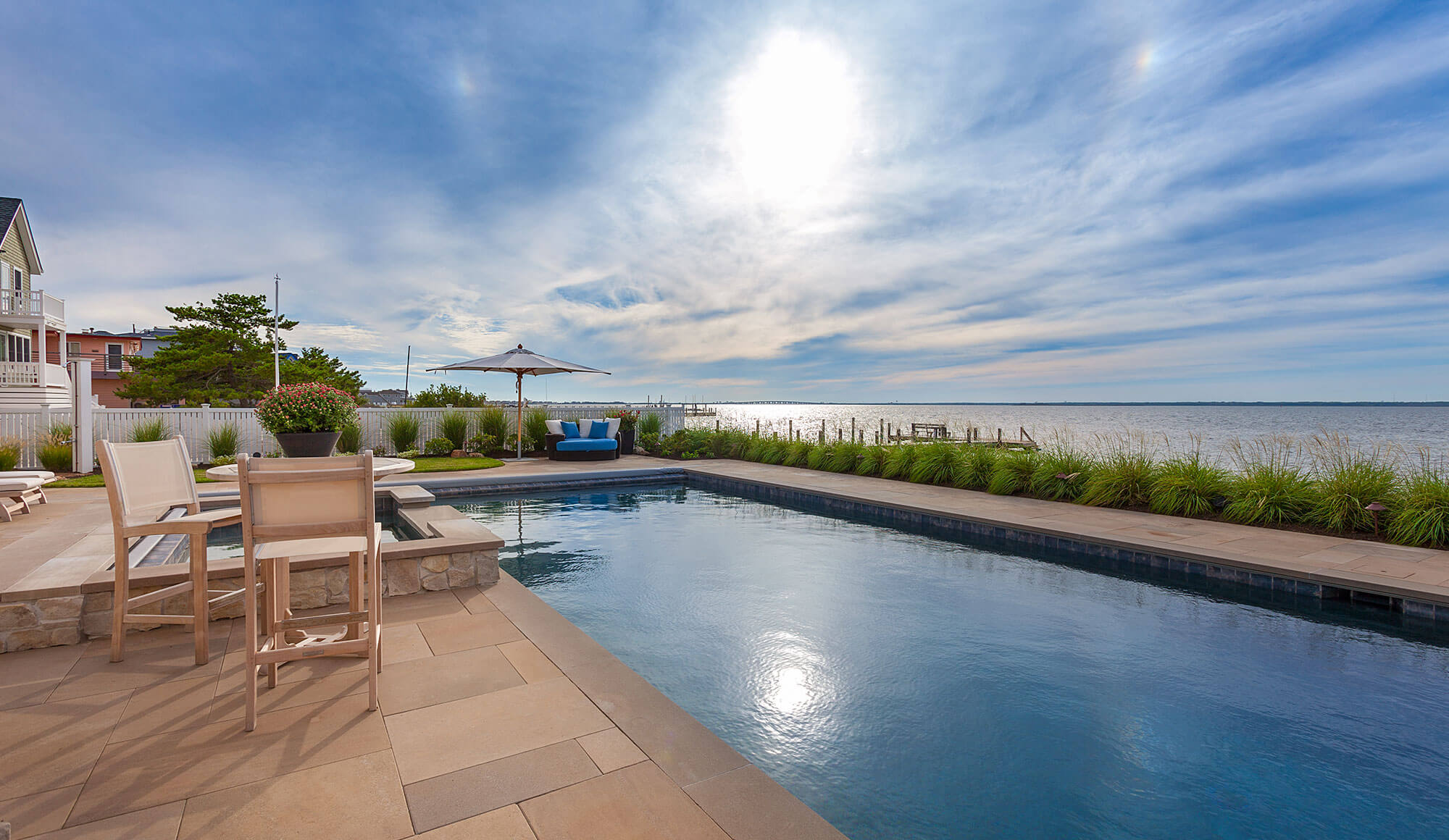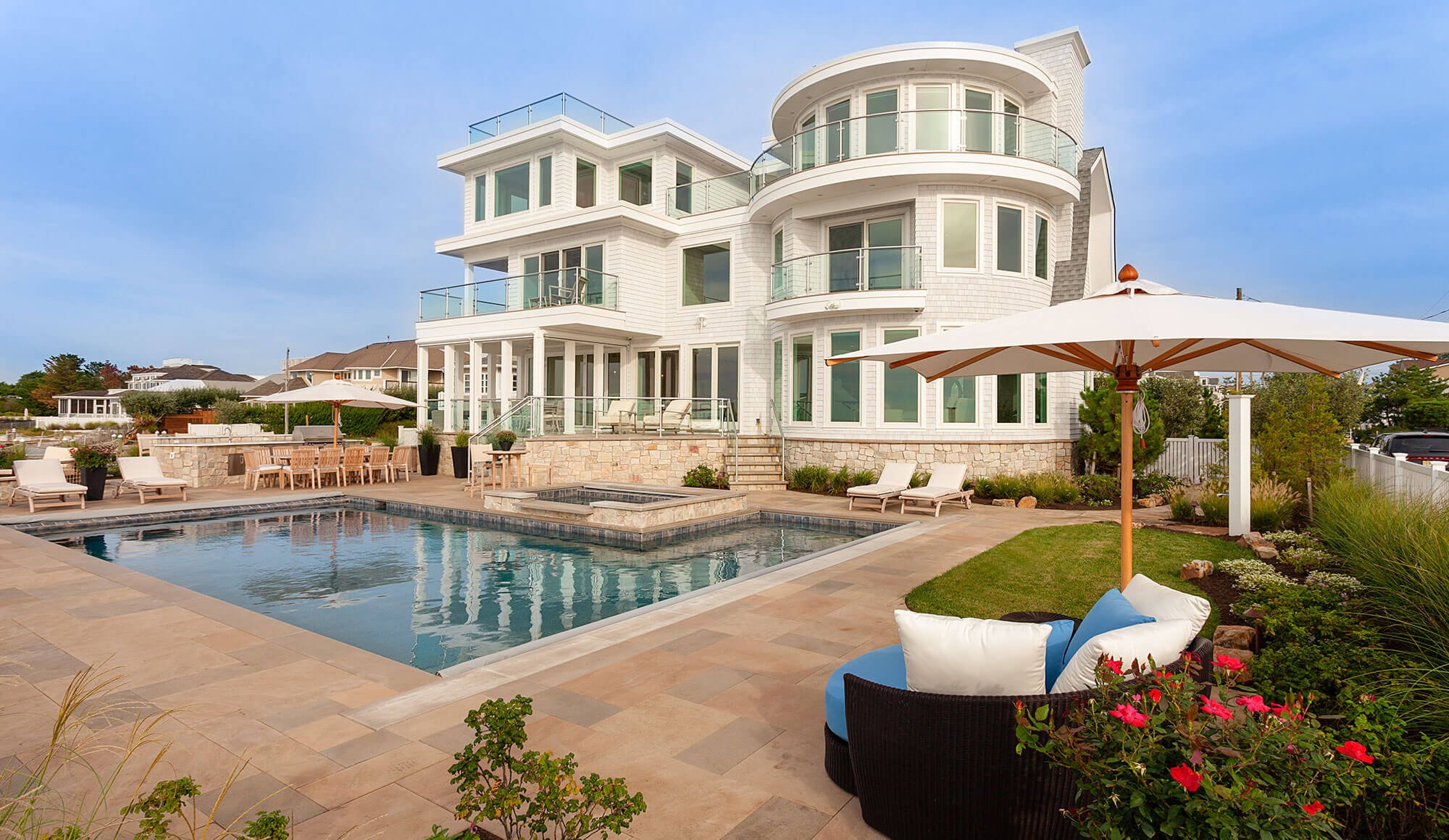From Concept to Completion
First impressions are everything. And when it comes to your home, one of the first things you and your guests will see is your landscape. Here are the top five ways you can make a great first impression by adding curb appeal to your home with your landscape.
Seasonal Color
When we asked the team at Bay Ave Plant Company what their number one recommendation would be for adding curb appeal, the answer was simple: color! Due to the variety of colors and textures, seasonal annuals can help bring life to any landscape. Large blocks of color with spring pansies, summer geraniums, and fall mums will add tremendous interest. Try mixing regional annuals with tropical elements like cana, mandavilla, and palms. Some annuals that attract pollinators, which are critical to Long Beach Island and its surrounding areas, include sunflowers, lantana, pentas, and petunias. Annuals provide a pop of color in a predominantly green landscape and supply constant color in a landscape when perennials fade in and out. A beautifully placed row of color can lead you to a front entry or guide your guests to a rear yard used for entertaining. Nothing is more welcoming than colorful annuals in a planter by the front door.
Architecture
When designing a landscape, keep in mind the largest part of the landscape: the home. This can be achieved whether you are building a new home and designing your landscape along with it, or just sprucing up your existing landscape. In the example of the design rendering, courtesy of Bay Ave Plant Company, the home’s architectural characteristics and design elements were studied when choosing materials for the landscape.
Here are some examples of questions that Tom Scangarello from Bay Ave asks when thinking about curb appeal: Is the home traditional or contemporary? Is it surfaced with cedar shake or stone? Answers can offer guidelines that help shape your landscape. The lines in a courtyard entry to a front door should complement the front door and the entry itself. Materials like natural stone that mimic the stone veneer used on the home can be used throughout the yard or on structural elements like outdoor kitchens and fire pits. Trim detail can be added into fencing detail or furniture detail. Your home’s colors or complimentary colors can be used throughout the yard in plantings and patio stone materials.

Maintenance
When discussing a new project with a client, Tom will often ask what they are looking for in their new landscape. Some common requests for a new landscape when it comes to plantings are: low maintenance, drought tolerant, and lasting color. While all can be achieved, having a plan for keeping your landscaping looking its best is paramount. Plants will almost always need water initially. Having a reliable watering system will help insure that your new plants truly come to life. Perennials and some annuals need to be pruned and deadheaded at the appropriate times to keep them blooming and looking their best. And your beds and stone areas should be kept tidy and free from weeds. Whether you love getting your hands dirty or plan on hiring a maintenance company, it’s important to keep up with your new landscape.
Lighting
Why not have that new curb appeal look great at night as well as by day? Today, homeowners have a number of lighting options that help provide safety, security, and beautiful aesthetics. Most lighting systems are now LED, making systems more efficient to run throughout the year. Landscape lights are no longer white and institutional looking. Full color spectrums are now available in most fixtures. Color can easily be used to highlight certain plant material or structures throughout your landscape. Adding light to various aspects of a yard helps create depth and dimension. Lighting can be used to extend boundaries so that all the spaces throughout your yard are being utilized in evening hours while entertaining. Lighting techniques such as backlighting and moonlighting are great ways to add interest and show movement.
Balance
It is important when installing hardscape patios, walks, and driveways to have a nice balance of soft three dimensional elements to help balance the hard flat lines and surfaces that you’re creating. These elements could include mulched planting beds anchoring a large driveway, teak patio furniture on top of your new pool patio, strategically placed pots with annual plantings at entry locations, arbors and pergolas along walks and patios, and lawn areas alongside larger bodies of hardscape. When choosing plantings to soften your patio, walks, or driveway, try to choose plants that offer a variety of colors and textures that will complement the area. Plants should be arranged through a series of layers starting with the shorter plants in the front and larger plants in the rear. Don’t forget to check growth rates and patterns. It’s a good idea to be patient and not overplant; landscapes can take time to come into their full potential. Sit back, relax, and enjoy watching your beautiful landscape take shape.

